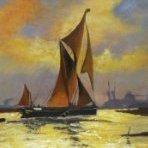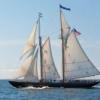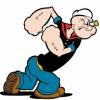-
Posts
979 -
Joined
-
Last visited
Reputation Activity
-
 jwvolz got a reaction from AJohnson in HMS Sophie from Cruizer kit by jwvolz (Joe V.) - FINISHED - Caldercraft - 1:64 - kitbash
jwvolz got a reaction from AJohnson in HMS Sophie from Cruizer kit by jwvolz (Joe V.) - FINISHED - Caldercraft - 1:64 - kitbash
Sophie is complete, and has been for a while but just getting around to getting pictures up. I've been through a rough patch health wise, with four hospitalizations and two surgeries over the last few months. Hopefully on the road to full recovery at this point.
Anyway...hope you enjoy the final photos, it was quite an enjoyable build, and with a few changes I highly recommend the kit.
-
 jwvolz got a reaction from AJohnson in HMS Sophie from Cruizer kit by jwvolz (Joe V.) - FINISHED - Caldercraft - 1:64 - kitbash
jwvolz got a reaction from AJohnson in HMS Sophie from Cruizer kit by jwvolz (Joe V.) - FINISHED - Caldercraft - 1:64 - kitbash
More
-
 jwvolz got a reaction from Elia in Benjamin W Latham by jwvolz - FINISHED - Model Shipways - 1:48
jwvolz got a reaction from Elia in Benjamin W Latham by jwvolz - FINISHED - Model Shipways - 1:48
I'm currently working on some plastic models as well as the Latham, so things aren't proceeding as rapidly at the moment. I did get the cap rails installed and the hull painted. Hull was painted with the airbrush. I was going to scribe the cove as per prototype, but tests showed that was not going to work very well in the basswood so I decided to just paint it on, which turned out much better.
I used water slide decals from Microscale for the name. I couldn't find gold in the font/scale I wanted so had to use white.
-
 jwvolz got a reaction from yvesvidal in Benjamin W Latham by jwvolz - FINISHED - Model Shipways - 1:48
jwvolz got a reaction from yvesvidal in Benjamin W Latham by jwvolz - FINISHED - Model Shipways - 1:48
Finished the seine boat. I did not take in-progress pictures past that initial one on the build board. Let's just say the process between there and finished was not pretty, but in the end came out reasonably well. The plans themselves are very good, it's the method MS gives you to get there that isn't...
There is still a good bit of finished detail to add, but I'll leave that for later on at this point.
-
 jwvolz got a reaction from rlb in US Brig Oneida 1809 by rlb - The Lumberyard - 1:48 scale - POF - Lake Ontario Warship
jwvolz got a reaction from rlb in US Brig Oneida 1809 by rlb - The Lumberyard - 1:48 scale - POF - Lake Ontario Warship
Looking very nice Ron.
-
 jwvolz reacted to Gahm in US Brig Syren by Gahm - Model Shipways
jwvolz reacted to Gahm in US Brig Syren by Gahm - Model Shipways
I finished the Syren longboat. The following pictures show the making of the gratings (Img 1), the finished cockpit (Img 2), the bowsprit holder (Img 3), the knees (Img 4), the oar locks (Img 5), the rudder with hinges (Img 6), and some images of the finished boat (Imgs 7-10).
Thomas
Image 1
Image 2
Image 3
Image 4
Image 5
Image 6
Image 7
Image 8
Image 9
Image 10
-
 jwvolz got a reaction from popeye the sailor in HMS Vanguard by marktiedens - Model Shipways - scale 1:72
jwvolz got a reaction from popeye the sailor in HMS Vanguard by marktiedens - Model Shipways - scale 1:72
Mark,
I have a build that is 22 years old that was done with the copper tape. Not even a hint of anything lifting. Hopefully this is reassuring...
-
 jwvolz reacted to rlb in US Brig Oneida 1809 by rlb - The Lumberyard - 1:48 scale - POF - Lake Ontario Warship
jwvolz reacted to rlb in US Brig Oneida 1809 by rlb - The Lumberyard - 1:48 scale - POF - Lake Ontario Warship
Moving forward with the anchors:
Here I have blackened the straps, and anchor rings--
My plan was to epoxy the blackened straps to the top of the stocks, and once the epoxy set, bend the bands around and epoxy the ends underneath--
Unfortunately, the epoxy wouldn't hold the bands, even though the brass was paper thin, and took hardly any force to bend. They just popped off. I tried CA glue next, but that didn't work either. Plan B was to solder the bands closed, and then slip them onto the stocks. However, the brass was too thin, and melted before the solder would flow.
I cut new bands from thicker brass, and bent and hammered them around this dummy stock, then soldered them closed. I then test fit them on the real anchor stock, trimming and re-soldering as necessary to get a snug fit at the proper locations on the stock--
Once I had my eight bands, they were ready to blacken. You can see I also "pudding-ed" one of the rings--
Most of the bands fit well, and they are just held by friction. I did the other rings, and here is Oneida's complement of anchors--
Ron
-
 jwvolz reacted to Mike_H in HMS Snake by Mike_H - FINISHED - Caldercraft - 1:64
jwvolz reacted to Mike_H in HMS Snake by Mike_H - FINISHED - Caldercraft - 1:64
Copper is done! Just need to paint the sternpost, the leading edge of the rudder and the straps, and then attach the straps to the gudgeons and pintles.
The learning:
2 drops of thick CA per tile hold a tile in place with a finger and a the tips of a pair of tweezers (I reserve a pair for working with CA since then end up with a coating), remove finger, remove tweezers, in that order, or you risk the tiles coming off stuck to your finger A little bit of glue seepage occurs - but don't worry (see cleaning!) cut with a pair of scissors. each tile takes about a minute to lay, unless it needs trimming, then it's about 10 minutes the waterline batten makes the final edge pretty easy and hides the inevitable imperfections getting a perfectly aligned edge on the sternpost is hard, but I left an overhang and then filed with as small metal file. Worked very well there, and on the rudder. The file tends to wrap the edge of the tile around the edge which is useful... the keel, rudder and sternpost are all 5 mm wide, a tile is 0.2 mm thick, so the covered thickness is 5.4 mm, but a tile is 5.6 mm wide, giving a 0.2 mm overhang (more if you have been a bit zealous with the sanding). I tried trimming the tiles but couldn't get the width accurate or indeed the cut edge straight. But really, who cares about 0.2 mm overhang? I would have left it but it was very obvious in the few places where I had sanded too much. I tried filing and it worked a treat, eventually wrapping the tile around those butting up to it be sparing and reuse your trimmings, there are very few spare tiles. In the picture below the pot on the left is unused trimmings, and on the right is the remaining tiles (26 of them), and there are about 800 on the ship
So cleaning:
Whatever patina you want on your copper I think you need to get the glue off, and probably the finger grease so I
soaked a scrap of rag with CA glue remover and gave the copper a good rub down. It took about 5 minutes but i could see the large marks softening and coming off. I then soaked another rag in iso-propyl alcohol (propan-2-ol to the chemists - see more in minute) and wiped over again. It came up clean but the tarnish was obvious from some angles and quite blotchy. Patina:
You can find many an article on this forum, but most usually conclude that it's a matter of taste. Well my taste owes quite a bit to Patrick O'Brian who refers periodically to a glimpse of salmon-coloured copper appearing as Surprise heels in the wind. I was reluctant to use an abrasive polish as they almost inevitably leave a powdery residue. And, full transparency, I'm a chemical engineer, so chemical cleaning seemed natural. You can find a discussion of "pickling" here where "Sparex" is used to clean brass. Sparex is an expensive form of sodium hydrogen sulphate (NaHSO4), which in turn is a partly neutralised form of sulphuric acid (and much safer in concentrated form). You can buy it very cheaply from pool-supply companies (described as sodium bi-sulphate) where it is sold for lowering the pH of things like hot tubs.
make up a volume of acidic solution. I use a recycled 600 ml supermarket soup tub. Aim for about 50 ml of NaHSO4 in about 250 ml of hot water (add the powder to the water, not vice versa. This way the solution starts weak and gets more concentrated, where as the other way it starts very concentrated and then weakens. If anything goes wrong, you want the former, not the latter to spill on your workbench). You end up with a solution at roughly pH 1 which is not all that dangerous, but glasses and gloves are called for. I do this at my model building desk, but a a kitchen sink might make more sense. make up a volume of alkali solution. About 60 ml of sodium bicarbonate (baking soda) in about 250 ml of hot water - it won't all dissolve but that's ok. wearing gloves, dampen a cloth in the acid solution and wipe the copper all over. Don't go crazy and soak the whole ship. I wiped one half of the hull for about 2 minutes, then dunked the cloth again and wiped that half for another 2. then take another cloth, and dampen it in the alkali solution and wipe over the acid-treated copper. You will hear a bit of fizzing, nothing worse. You now have copper tiles covered in a dilute sodium sulfate (Na2SO4) solution, which when dry would leave a dusting of white crystals. take another cloth soaked in clean water and wipe off the Na2SO4 solution. Dry with a cloth and repeat. now do the other half of the hull. To dispose of the solutions it seems best to neutralise one with the other. In a sink very gently pour a little of the acid into the alkali container - it will foam like mad, so start very slowly, eventually it will calm down and once you have mixed them all it should be a pretty neutral solution of Na2SO4 that can go down the drain. Rinse out your cloths - I give the acid cloth a slow dunk in the alkali first This gave a very shiny uniformly coloured copper finish. Which is what I want. To keep that finish I then applied two coats of acrylic satin varnish.
Here are the results:
-
 jwvolz reacted to desalgu in 18th Century Long Boat by desalgu - FINISHED - Model Shipways - 1:48
jwvolz reacted to desalgu in 18th Century Long Boat by desalgu - FINISHED - Model Shipways - 1:48
Planking is finished. It took a fair amount of sanding. I guess if I had done a better job of planking (bending and tapering planks more carefully), I wouldn't have had to sand as much. I found planking this small model more difficult than a larger model. But it was certainly a good learning experience.
I also glued on stern post, which is just a small triangular piece of wood, and did a little more sanding. Then I put on stain to see what it would look like.
I'm curious what anyone thinks about leaving hull stained instead of painting below waterline white. I've seen a lot of models painted white below the waterline. I'm guessing this is more scale than leaving it natural wood. I like some paint on a model as an accent, but I think I like the natural wood color, and it shows off planking for what that's worth.
-
 jwvolz got a reaction from popeye the sailor in Bluenose by Retired guy - Model Shipways - scale 1:64
jwvolz got a reaction from popeye the sailor in Bluenose by Retired guy - Model Shipways - scale 1:64
Looking good Richard.
-
 jwvolz got a reaction from popeye the sailor in Bluenose by Retired guy - Model Shipways - scale 1:64
jwvolz got a reaction from popeye the sailor in Bluenose by Retired guy - Model Shipways - scale 1:64
Very, very nice Richard.
-
 jwvolz got a reaction from David Bedoya in Shimakaze by Landlubber Mike - FINISHED - Hasegawa - 1:350 - PLASTIC - Japanese WWII Destroyer
jwvolz got a reaction from David Bedoya in Shimakaze by Landlubber Mike - FINISHED - Hasegawa - 1:350 - PLASTIC - Japanese WWII Destroyer
Looks like an interesting build Mike. Good luck with your foray into plastic!
I've had the itch to build some plastic lately after not having done so for a few years.
-
 jwvolz got a reaction from popeye the sailor in IJN Hatsuzakura by Landlubber Mike - FINISHED - Pit Road - 1/700 - PLASTIC - with FiveStar PE
jwvolz got a reaction from popeye the sailor in IJN Hatsuzakura by Landlubber Mike - FINISHED - Pit Road - 1/700 - PLASTIC - with FiveStar PE
My eyes are crossing just looking at that Mike. Nice job!
-
 jwvolz reacted to ChrisSC in SS Normandie by ChrisSC - FINISHED - Blue Ridge Models - 1/700 - PLASTIC
jwvolz reacted to ChrisSC in SS Normandie by ChrisSC - FINISHED - Blue Ridge Models - 1/700 - PLASTIC
Well I'm calling this 1/700 resin Normandie done. That's about as much as I feel like doing to it. I doubt I will ever put rigging on it as it's so fragile I think a breeze would break stuff off! This was a lot harder to build than I ever thought it would be.
-
 jwvolz reacted to glbarlow in HM Cutter Cheerful 1806 by glbarlow - FINISHED - 1:48
jwvolz reacted to glbarlow in HM Cutter Cheerful 1806 by glbarlow - FINISHED - 1:48
Channels, Chainplates, Dead Eyes, and Strops
This is that moment when you know you’re not in kit world anymore. No PE to cut out and assemble and or laser ready wood to shape and paint, for this segment of the build everything is made from scratch. By now I sound like a broken record, but here again was something I’d never done. While Chuck’s monograph was as clear and helpful as always, I still had to figure out a way make each of these components. I had never worked anything from metal, I know - what limited skills I have.
First up is the channels, take a stick of wood, make it pretty and capable of holding deadeyes and chainplates, then make four of them. The best purchase I’ve made for my modeling is my Byrnes saw, nothing beats it. Quickly moving into second place is my Proxxon MF 70 Micro Mill. I’m learning more and more how to use it, still basic stuff, but things I’m not really sure how I would have made without it.
I chose to make these from my stash of boxwood. I like the yellow cedar but boxwood works better for more intricate pieces, it is a harder wood and holds shape nicely. The boxwood and yellow cedar are complimentary on the model, adding just a little tone difference. Chuck’s mini-kits come in both woods, I chose the boxwood for all of mine, even the ones I painted.
-
Next up is making the 6mm deadeyes. I made a simple jig to line up the three pieces, a small center and two outer pieces, basically a vanilla Oreo cookie, glued together after removing the char.
I wanted to give the deadeyes a little character, a bit too neat right off the sheet, so I tumbled them in this MicroMart block tumbler. It has a 220 grit sandpaper bottom, sides, and a 4 part spindle also covered with 220 grit. I connected the spindle to my drill, tossed the blocks inside and spun it until I liked what came out. Two things if you haven’t used one of these; I was more successful with it sideways as shown and I needed to reverse the drill (as in screw out not in) to match the the sandpaper. I’m left-handed so maybe I assembled it backwards, I do that on occasion, it’s a right-hander’s world. I finished them up with wipe-on poly.
Then is was time for me to become a blacksmith and work in metal, I'd put it off as long as I could. I approached this step with a bit of trepidation. The monograph was clear enough on what to do, I just wasn’t sure how I was going to make 6 (near) identical backstays and 8 (near) identical chainplates from a strip of brass. For starters, it hadn’t been easy to find the right thickness and width of brass, but fortunately I’d completed this hunt a few months ago. Now I have enough to make 176 chainplates, just in case. My first step, seemingly as always, was to find out how many different tools I could use - this is just a sample. I always hand drill everything made of wood with pin vises. However, this cheap battery powered drill was essential to drill the holes in the brass, I’d have been twisting forever otherwise. The vise from the Proxxon mill proved equally handy off the mill to firmly hold the pieces.
To make both the backstays and chainplates requires a bit of shaping and filing. I kept the shape simple so I could repeat it multiple times, jewelry making is not in my future. I of course could have filed these by hand, but hey, there is a mill sitting right there. It was slow going, for me, to set zeros on two of three axis for each side, 22 times (I did the backstays working from the center as shown in the previous photograph).
Having finally completed the chainplates it was time to determine the proper angles using a temporary mask and string, a process most of us know and applies to any model (well not modern war ships I suppose).
With the holes marked and drilled then it’s a dry fit to confirm everything is lined up. I only needed about a third of the length to attach the strops, but I didn’t know that when I was making them.
And then off to the blackening station. I chose to blacken rather than paint these. The result is a more worn, gun metal look. I was originally going to paint them Iron Work Black like other parts of the model but then decided I liked these. I think it provides a little character, more of a ‘I didn’t buy these from the store’ look.
I normally like to explain how I did something in the hopes it will help others in some way, or at least provide a way they don’t want to do it. I had someone ask me recently in a PM to explain how I did seizings, so I went into great detail and even linked a YouTube video. The person replied, oh I don’t want to do it like that. Sigh...
Anyway, my advice for making deadeye strops is go find another build log. I had to learn every step of the way here. I’ve never soldered anything for a model, never used solder paste (though its kinda cool, you apply it, hit with a torch and it flashes into a finished connection). Now I’m going to use it for some ring bolts just for fun. I had many fails. First make a circle and solder the opening (ok, got it, at least after I learned how to use the solder) then shape that around the deadeye in the traditional shape, Pop, there went the solder joint, start over. I settled on a length of wire 22mm long. I couldn't get 21mm to work without the joint popping while bending it around the deadeye, I started with 24mm, tried 23mm - really these small differences mattered - they were too big, so 22mm it was. After many attempts I got 8 to shaped around the deadeyes and mounted on the chainplates. So yes, I made it all myself from brass strip and black wire. But I’m not the one to ask on best practices even though it turned out ok and I held to my standard of doing it over until I got it right.
This stage took me a full month. Of course it was partially due to Snowageddon here in Texas, rolling power outages, the lowest temperatures since 1949, real snow to play in with the grandkids. I was playing outside with them on a Friday after it finally warmed up to 24 (F) degrees (from below zero earlier in the week). On Monday, three days later, it reached 76 (F) degrees…Texas…
I admit was frustrated a bit during this phase, so many fails. I thought more than once to use some retail ready fittings in lieu of my own but none would really work without cheapening the model, and I would have regretted it later. I am glad I did it all myself, I would encourage anyone who gets this point to do the same, if I can anyone can. The next time a model calls for metal work I now have some experience, I bet I could do it in half the number of fails.
On to fun stuff, I'm not far from finishing the hull. I'm going to finish making everything including the bowsprit before gluing anything on.
Thanks for stopping by, I hope you were mildly entertained.
-
 jwvolz reacted to KenW in Providence by KenW - FINISHED - 1:48 - Colonial Sloop
jwvolz reacted to KenW in Providence by KenW - FINISHED - 1:48 - Colonial Sloop
I’m moving along with work on the hull. First I installed stairs leading from the quarter deck to the main deck. The stairs are a little wide, but I think they would’ve been busy.
I also made a binacle. It has the normal setup - in the middle is the lantern I made last summer, along with two compasses. I tried to make sure both compasses are pointing in the same direction. Please note that the binacle is not glued onto the deck yet.
And, finally, I installed the rudder using the Syren Pintles and Gudgeons kit.
-
 jwvolz reacted to rafine in Duchess of Kingston 1778 by rafine - Vanguard Models - 1:64
jwvolz reacted to rafine in Duchess of Kingston 1778 by rafine - Vanguard Models - 1:64
I have now begun work on the masting and rigging. The first work was to construct and mount the lower masts. This involved shaping the mast heads, adding the cheeks, making up and mounting the platform assemblies, doing the wooldings, adding deadeyes and blocks, and mounting the completed assemblies. Blocks attached to the head will not be done until after the lower shrouds and stays are in place. Over the years, I have settled on my own sequence of steps in the rigging process. I will proceed by doing the lower shrouds and stays before constructing and mounting the upper mast sections. The rigging will go from the mizzen forward to maximize access.
Bob
-
 jwvolz got a reaction from popeye the sailor in Charles W Morgan by Landlubber Mike - Model Shipways - Scale 1:64 - New Bedford Whaling Bark
jwvolz got a reaction from popeye the sailor in Charles W Morgan by Landlubber Mike - Model Shipways - Scale 1:64 - New Bedford Whaling Bark
Looking good Mike.
I used Woodland Scenic lettering for the nameplate on my Cruizer brig, now named Sophie. They work very well, but it may be more difficult to apply them directly to the hull. I made a separate nameplate.
-
 jwvolz got a reaction from popeye the sailor in Charles W Morgan by Landlubber Mike - Model Shipways - Scale 1:64 - New Bedford Whaling Bark
jwvolz got a reaction from popeye the sailor in Charles W Morgan by Landlubber Mike - Model Shipways - Scale 1:64 - New Bedford Whaling Bark
Great job Mike.
-
 jwvolz got a reaction from popeye the sailor in Charles W Morgan by Landlubber Mike - Model Shipways - Scale 1:64 - New Bedford Whaling Bark
jwvolz got a reaction from popeye the sailor in Charles W Morgan by Landlubber Mike - Model Shipways - Scale 1:64 - New Bedford Whaling Bark
Still in mothballs Mike. Deep, in mothballs...
Cruizer is keeping me plenty busy though.
-
 jwvolz got a reaction from popeye the sailor in Charles W Morgan by Landlubber Mike - Model Shipways - Scale 1:64 - New Bedford Whaling Bark
jwvolz got a reaction from popeye the sailor in Charles W Morgan by Landlubber Mike - Model Shipways - Scale 1:64 - New Bedford Whaling Bark
Great stuff Mike. Clever work with the multiple woods.
-
 jwvolz got a reaction from popeye the sailor in Charles W Morgan by Landlubber Mike - Model Shipways - Scale 1:64 - New Bedford Whaling Bark
jwvolz got a reaction from popeye the sailor in Charles W Morgan by Landlubber Mike - Model Shipways - Scale 1:64 - New Bedford Whaling Bark
Looking good Mike.
-
 jwvolz got a reaction from popeye the sailor in Charles W Morgan by Landlubber Mike - Model Shipways - Scale 1:64 - New Bedford Whaling Bark
jwvolz got a reaction from popeye the sailor in Charles W Morgan by Landlubber Mike - Model Shipways - Scale 1:64 - New Bedford Whaling Bark
Hi Mike. Nice to see you starting the Morgan. Mine has been shelved for months now sue to a major foul up on my part with the framing. Not 100% sure it is salvageable, and I'm too annoyed with it to be motivated to fix at the moment.
I'll live vicariously through yours fro awhile. Hopefully you can inspire a re-start...
-
 jwvolz got a reaction from FriedClams in Bluenose by Retired guy - Model Shipways - scale 1:64
jwvolz got a reaction from FriedClams in Bluenose by Retired guy - Model Shipways - scale 1:64
Looking good Richard.






